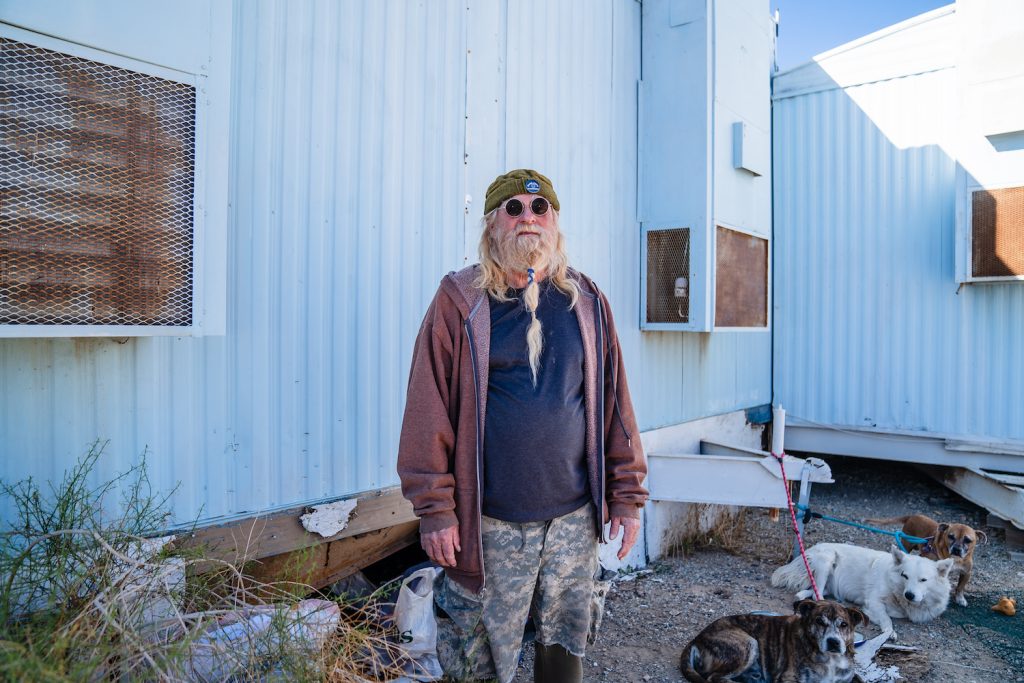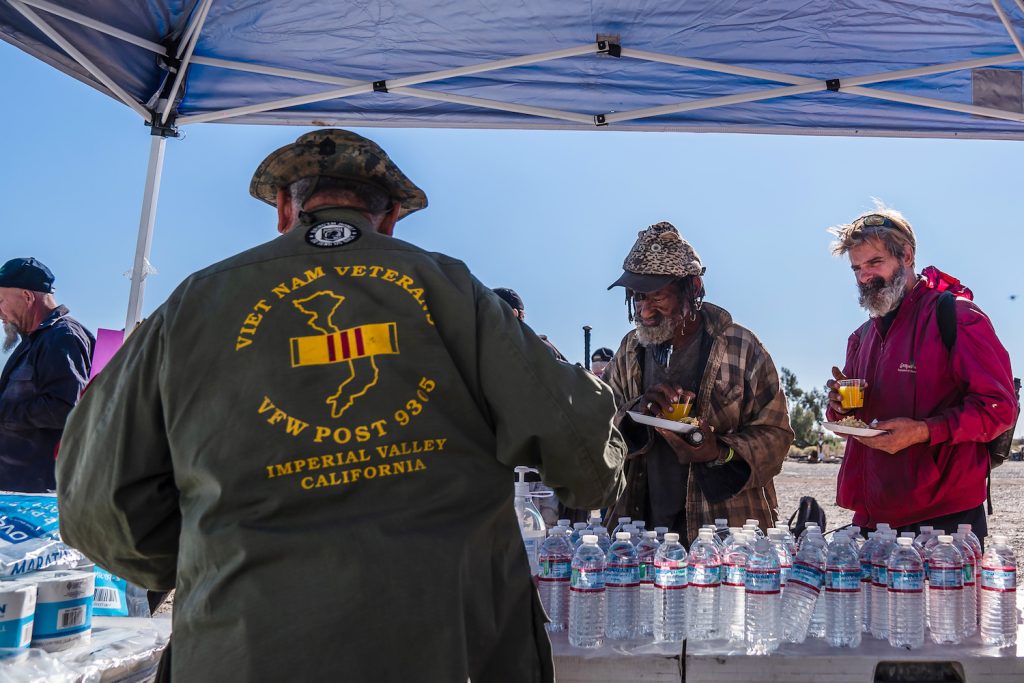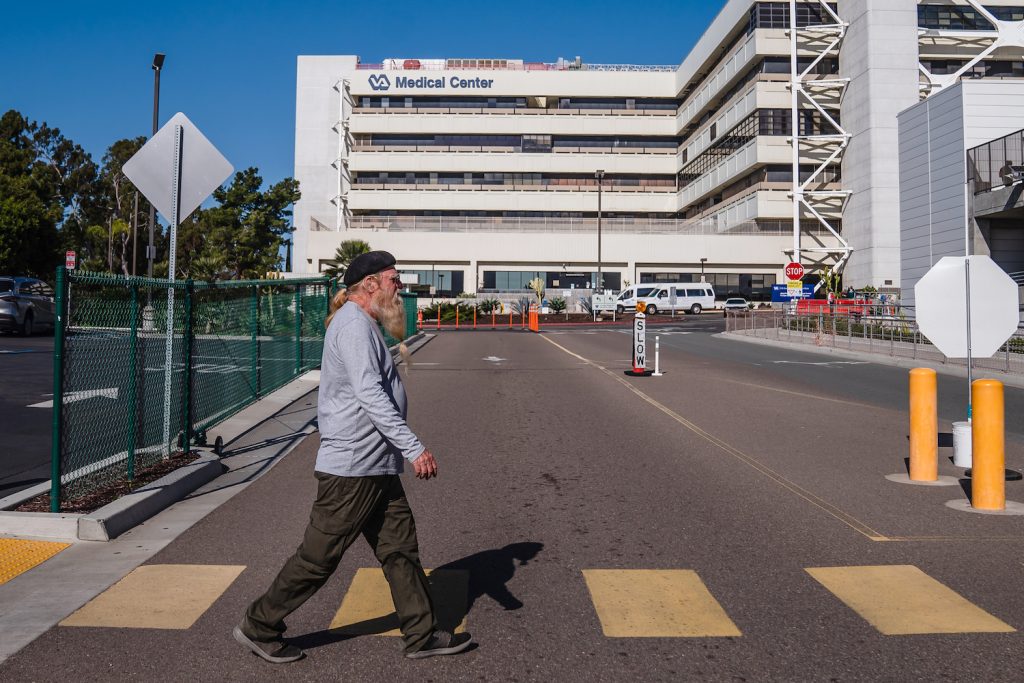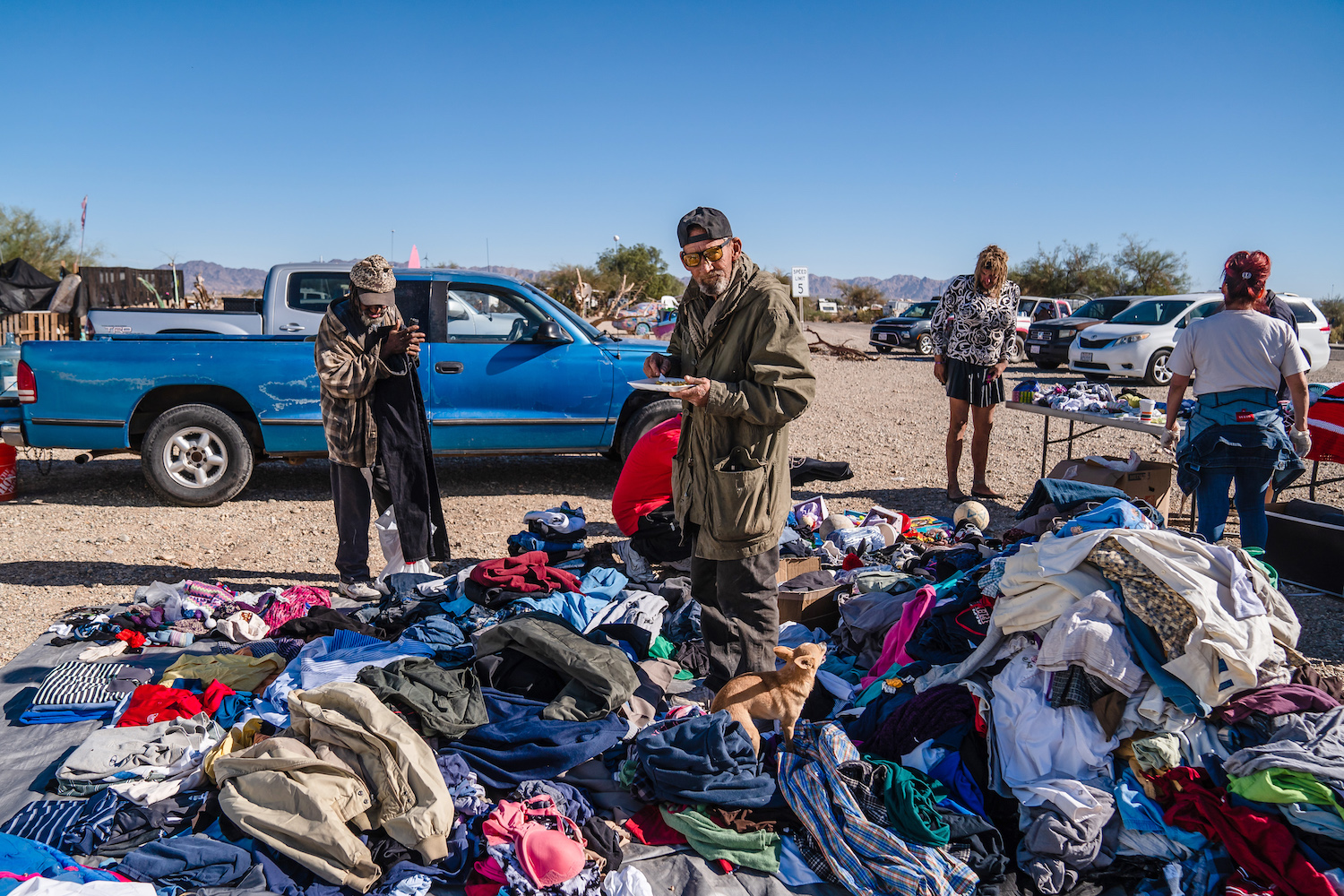The rule, according to Tom Allen, is that you must live full-time in this Sonoran Desert wasteland for two years before you’re a true resident of Slab City.
The unincorporated community of rusted-out RVs and eclectically arranged junk east of the Salton Sea in southern California is famously lawless. Before its current incarnation, Slab City was a military anti-aircraft practicing ground. The government eventually abandoned its base there and tore down the buildings, leaving behind concrete slab foundations.
Today, Slab City attracts artists and tourists with weekend music festivals on the range and eerie, UFO- infused, open-air art galleries. But the original slabbers settled here to isolate themselves from rules and regulations. Many living on the bones of this former military base are veterans.
“In the slabs, we’re here because we’re not all there,” 70-year-old Allen says.

Veteran Tom Allen, 70, has made Slab City his winter home for years
As a young man, Allen avoided the draft. His brothers had already been sent off to Vietnam. Eventually, the military found Allen and put him on an anti-tank squad at the east-west German border. He left with tinnitus—a sharp, permanent ringing in his ears.
Allen returned home in 1975 to widespread indifference or hatred toward Vietnam-era veterans who struggled adjusting to civilian life. GI benefits were almost nonexistent. Allen dealt not only with the shame of serving at a time of brutal and unpopular war, but also the constant trill in his ears from firing heavy artillery.
“The VA back in the ’70s was crap,” Allen says. “They were your enemy.”
Allen avoided anything associated with the military for decades, living at the slabs during California desert winters and in the mountains in summertime. Then, one November day in 2022, the US Department of Veterans Affairs (VA) descended on the slabs armed with hamburgers and a grill.
“It was Napoleon Bonaparte that said, ‘An army travels on its stomach,’” says Henry Peterson, a chaplain with the VA. “The way to attract people is food and clothing.”
Nine years ago, Peterson began locating veterans living in the desert without treatment or attention from the VA. He learned of Slab City from the local Veterans of Foreign Wars (VFW) branch. “It dawned on me that we can do something here,” Peterson says.
Peterson knew of San Diego’s Stand Down, an annual three-day takeover of the Pechanga Sports Arena parking lot by an array of government services for vets, from the DMV to child support and debt relief. Stand down, when used on the battlefield, commands soldiers to rest because the fighting is done.

Slab City dwellers queue for a meal at the Stand Up
Peterson calls Slab City’s version the “Stand Up,” adding that he hopes to prompt veterans to “stand up and take charge of their lives.” The Stand Up is a monthly meal served in the slabs’ churchyard by the VFW Post 9306 in El Centro. Peterson brings clergy, psychologists, and VA service coordinators.
Rillon learned Slab City vets prefer to communicate with the VA through signals. An American flag outside an encampment means a veteran is living there. An upside-down flag symbolizes a veteran in distress—a clear call for help from military services.
“A lot of people come here to let free whatever dark side they have. You gotta explore those; you can’t bottle it up,” says Robert W. Hill II, another military services and homeless outreach coordinator with the VA. “We’re saying, ‘We understand why you come out here, but take these benefits with you.’”

Tom Allen enters “enemy territory”—a VA hospital—to be fitted with hearing aids
These friendly interactions with the VA at the slabs convinced Allen to make an appointment for hearing aids. He found himself crossing enemy lines, so to speak, at San Diego’s VA hospital.
Allen is a musician. You’ll see him strumming covers of Iowa riverbottom folk tunes on the open mic stages in Slab City. He says he hadn’t truly heard the plucking of his own guitar since his stint firing missiles at tanks.
PARTNER CONTENT
In the waiting room of the VA’s audiology department, Allen expressed regret over failing to seek out government benefits sooner. But he also seemed hopeful for the changes his hearing aids would bring. “I’ll be able to hear the fidelity of music again,” he told me.
Afterward, Allen returned to his desert trailer, a retreat filled with musical instruments he can finally hear.

















